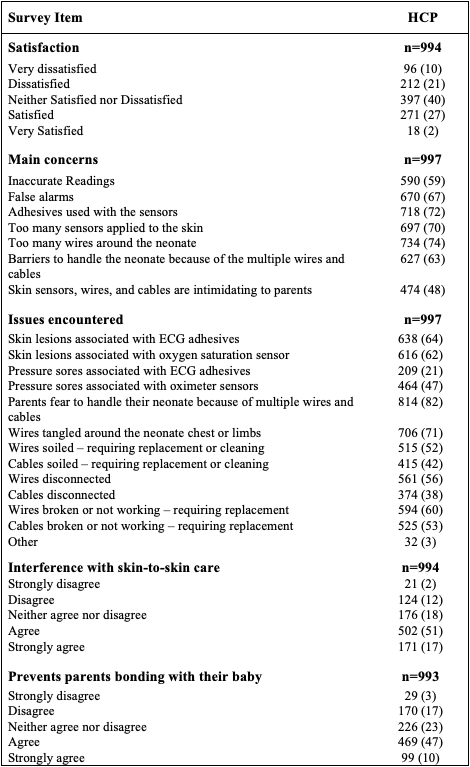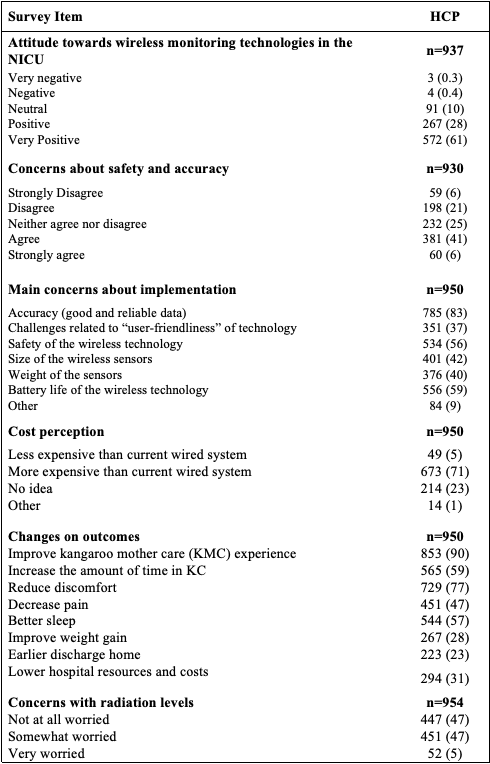Neonatology
Session: Neonatal General 6: POCUS, Technology in NICU
153 - Advanced Wireless Skin Sensors in the NICU: Healthcare Professionals Perspective
Sunday, May 5, 2024
3:30 PM - 6:00 PM ET
Poster Number: 153
Publication Number: 153.1821
Publication Number: 153.1821

Eva B. Senechal, BA&Sc.
PhD. Candidate
McGill University
Montréal, Quebec, Canada
Presenting Author(s)
Background: The Neonatal Intensive Care Unit (NICU) cares for ill and unstable neonates, using continuous vital sign monitoring. Currently, this monitoring relies on skin sensors connected to monitors using wires/cables, which can lead to issues like tangling, discomfort, and interference with nursing work and Kangaroo Mother Care (KMC). Advances in wireless skin sensors have sparked efforts to develop a wireless NICU monitoring system.
Objective: To understand health care professionals (HCP) perspectives on the current wired monitoring system and a potential wireless system for the NICU of the future.
Objective: To understand health care professionals (HCP) perspectives on the current wired monitoring system and a potential wireless system for the NICU of the future.
Design/Methods: A survey was developed with input from NICU HCPs. The survey encompassed 17 questions (multiple-choice, Likert scales, and short answers). A descriptive analysis was applied.
Results: A total of 1254 HCP responses were collected (nurses = 563, neonatologists = 364, physiotherapists = 139, other = 203) (Table 1). Only 29% of HCPs were satisfied with the current wired monitoring technology. Most were concerned about the adhesives (72%), number of wires (74%) and cables (70%) surrounding the baby, false alarms (67%), barriers to handling (63%), and inaccurate readings (59%). Additionally, most had experienced issues with the current technology such as parental fear of handling the infant due to wires and cables (82%), tangling of wires around the body (71%), skin lesions associated with ECG adhesives (64%), and oximeter sensors (62). Additionally, HCPs felt the current system interfered with Kangaroo Mother Care (KMC) (68%) and parent-infant bonding (57%) (Table 2). HCPs felt positively about the possibility of using wireless technology in the NICU (89%) and believed it would improve KMC experience (90%) and duration (59%) and reduce infant discomfort (77%). However, they were concerned about accuracy (83%), battery duration (59%), sensors weight (56%), radiation exposure (52%), and costs (71%) (Table 3).
Conclusion(s): HCPs expressed low satisfaction with the current wired NICU monitoring system. They exhibited a positive attitude towards a wireless monitoring technology for the NICU. Ongoing work is analyzing for differences between HCP subgroup responses.



